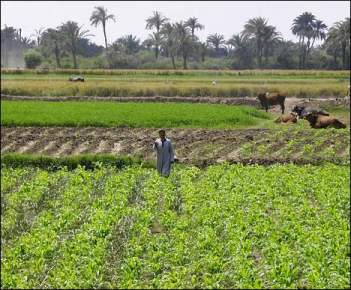All eyes on possible Fayoum, Egypt bird flu cluster
After a period of inactivity and relatively mild human cases of H5N1 avian influenza, the governate of Al Fayyum, Egypt is aflame with activity.
In the past few days, two confirmed influenza patients -- a 25-year-old woman and an eight-year-old boy -- have been confirmed to be suffering from bird flu. The woman is dead; the boy is stable.
Now, two more suspected human cases have been transferred from Fayoum, to Cairo's top bird flu hospital. The two cases are a 33-year-old woman and a 27-year-old of undetermined gender. Both of these cases seem to have come from within the city of Fayoum, and the other new cases were not far removed from the city.
Making matters even more shaky is the revelation that two siblings of these newer cases have also exhibited flu-like symptoms. Fortunately, when Egyptian doctors suspect H5N1 human infection, and even if the patient tests negative initially, they hold the patient for observation for another 48 hours and retest.
The proximity of Al Fayuum to the Nile can be seen on the map. The city of Fayoum itself is apparently quite a sight. According to multiple Websites, Fayoum Oasis is the largest oasis in the country, and the city has a population of approximately two million people. I have no census on the number of ducks, chickens and other domesticated birds.

It has been awhile since we had a legitimate Egyptian cluster of cases to contend with. that stretches back to late 2006 and the famous Gharibya cluster. Gharibya is also on the Nile Delta, about 80 kilometers northwest of Cairo. In that cluster, three people from the same family died. We thought we might have an even larger cluster in the same locale this past January, but tests were negative-to-inconclusive.
This year, flu-like symptoms have been especially prevalent in the upper Nile Delta, and based on past performance, Gharbiya was on the hot list for Tamiflu distribution. You can refresh recollections of Egypt earlier this year through my posts from January, 2008 (search "Egypt" and "2008").
Also of great concern is the explosion in H5N1 mutations within Egypt. Speculation from Dr. Henry Niman and others is that these new mutations can be best explained by the virus's amazing knack of evolving beyond the ability of H5N1 vaccinations of domestic poultry to protect flocks. Many of these H5N1 vaccines have come from Asia, and informed speculation is that these vaccines were not tweaked for the Qinghai derivative that is now clearly and unquestionably endemic to Egypt. The old "What does not kill me makes me stronger" statement is perfectly tailored for influenza. Especially this influenza.
Two other factoids can also be folded into the discussion. Back in August, 2007, H7 was officially detected in a duck in the upper Nile Delta. As far as strictly avian influenzas go, H7 is notoriously easy for humans to catch. Ask the Welsh, Dutch and Germans about that. And back in January of this year, the Egyptian government expressed concern about the possibility that pigs were becoming reservoirs of H5N1 virus. Some local governments tried to cull swine, but were usually overruled by contingents of very angry farmers.
Finally, we also know that seasonal flu has been very bad in Egypt, as it has been bad everywhere. I cannot find the subtypes responsible, but January reports from Europe were pointing to H1N1. As we know, H1N1 in Europe and in the United States has suddenly shown some resistance to Tamiflu. In Norway, admittedly a loooooong way away from Egypt, that Tamiflu resistance rate is approaching seventy percent (70%).
So conditions in Egypt may be approaching "perfect storm" status. We have another cluster situation in Fayoum; potentially infected pigs across the nation; H7 circulating in the northern Nile Delta; seasonal flu raging across the Delta; and mutant Egyptian Qinghai H5N1 with an apparent resurgent ability to kill at least half of its victims.
March could wind up being an extremely interesting and taxing month for all.

Reader Comments